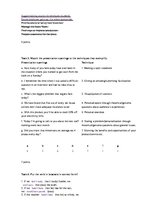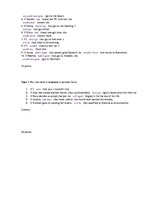-
Business English
Summaries, Notes4 Computers, Consumer Electronics, Economics, Linguistics, Interpreting
2021 - 2025 years
Task 1. Read the text. Answer the questions:
It was the techies who provided the final piece of the puzzle with artificial intelligence (AI), which was modeled after our own. Moving away from silver screens and into our daily lives, this technology promises to revolutionize all walks of human life, with the entrepreneurs acting as its early promoters and adopters across industries. There is no better meeting place for human and machine-based intelligence than our human resources (HR) departments. They will be thoroughly transformed through this synergy and its impact on their daily recruiting, assessment, onboarding and management practices.
Let’s make one thing clear from the start: AI technology will not put HR managers and staff out of work. Just as steam machines and computers did not send us into premature dystopias, AI tech promises to transform HR departments, not to make them redundant. After all, it will be only an extension of technology which many HR professionals already use at their homes, be it Cortana, Alexa or any other AI-based device. It’s a small wonder, then, that the majority of them see AI as offering the potential to revolutionize key HR responsibilities, such as recruiting, performance evaluation and education.
Talent acquisition is one of the key responsibilities of HR departments, but how can we ensure that it’s actually a “talent” that is eventually acquired? What about situations in which you end up with a smooth-talking and good looking employee who hardly lives up to the initial promise? As HR departments are populated by (spoiler ahead) fallible humans, they are not immune to human bias in these proceedings. AI technology promises to streamline this process by relying more on the analytical processing of huge amounts of data instead of on individual observations.
…
Business English - Cambridge 4 Test 2




